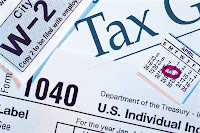Breedlove & Associates
Establishing Payroll Correctly
The first step in the tax process is to make sure the proper amount of taxes are being withheld from your paycheck each pay period. The IRS has a worksheet called Form W-4, which is used to determine the proper number of allowances for your personal tax situation. Allowances determine the amount of income taxes withheld — with the goal being to not owe any money at the end of the year (or perhaps even get a little money back). Because there are so many factors that affect personal income tax liability, it is impossible to manage with precision. In fact, you should allow for error of up to $500 — meaning you may get a refund of a few hundred dollars or you may be required to make a tax payment of a few hundred dollars. If you don’t like the idea of writing a check at the end of the year, then you should be conservative when you choose your allowances — a lower number of allowances will withhold more income taxes from each paycheck and, therefore, reduce your year-end liability. Conversely, a higher number of allowances will withhold less income taxes each paycheck and, therefore, increase your year-end tax liability. Once you have a tax history, it is easier to get closer to $0 by adjusting the number of allowances on Form W-4 to withhold a little less or a little more each pay period. A copy of Form W-4 can be downloaded at www.breedlove-online.com or www.irs.gov. If you have any questions, just give us a call.
What to expect at the end of the year
Once your payroll is set up properly, you won’t have to worry about anything until the end of each calendar year. Your employer will be remitting your withheld taxes to the state and federal tax agencies each calendar quarter. In January, when the tax year is complete, your employer will provide you with Form W-2s. It itemizes your gross wages for the tax year along with all your federal and state tax withholdings. You should receive your W-2s from your employer by the end of January, giving you plenty of time to prepare your income tax filings before the April 15 deadline.
Note: if you terminate your relationship with your employer during the tax year, it is your job to make sure that your former employer has your current mailing address so they can send your Form W-2s to you in January.
What to expect down the road
By the end of February each year, your employer will also have filed paperwork with the Social Security Administration on your behalf. About half of your taxes — along with a dollar-for-dollar match from your employer — will be going directly into your retirement account. Throughout your career, this account will accumulate and earn interest. The more money that goes in the more money you’ll receive during your retirement years.
In addition to Social Security and Medicare benefits, those who are paid legally have access to other important benefits, such as Unemployment, Earned Income Credit and, in most states, Disability and Workers’ Comp protection.
So, don’t think of it as a tax burden. Think of it as an investment in your financial security.
If you have any questions about the unique tax and labor laws for household employers,
call Breedlove & Associates at 888-273-3356 or visit www.breedlove-online.com.


wow it’s a good site. I have see another website about “Payroll,instant w2,w2 generator” this topic.